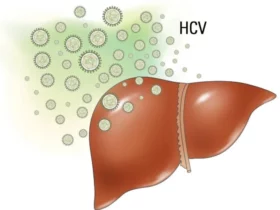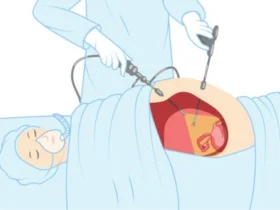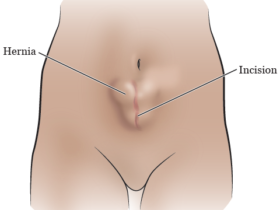Abdominal liposuction is a cosmetic surgical procedure designed to remove excess fat from the abdominal area, providing a more contoured and toned appearance. It’s commonly sought after by individuals looking to address stubborn fat deposits that are resistant to diet and exercise.
Exploring Abdominal Liposuction
What Is Abdominal Liposuction?
Abdominal liposuction is a surgical procedure designed to remove excess fat deposits from the abdomen. It involves the use of a thin tube called a cannula to suction out unwanted fat cells from specific areas of the abdomen, resulting in a smoother and more contoured appearance.
Is Liposuction the Right Choice for You?
Liposuction might be a suitable choice for individuals who:
- Have Stubborn Fat Deposits: Despite diet and exercise, certain areas of the abdomen might retain fat. Liposuction targets these localized fat deposits.
- Seek Improved Contouring: Those aiming for a more defined, contoured abdomen may benefit from liposuction.
- Have Good Skin Elasticity: Ideal candidates have relatively good skin elasticity, as liposuction removes fat but doesn’t tighten loose skin. For excess skin, other procedures like a tummy tuck may be more appropriate.
- Are in Good Health: Being in good overall health, without significant medical conditions, is crucial for a safe surgery and recovery.
- Maintain Realistic Expectations: Liposuction offers significant improvement but isn’t a solution for weight loss or a substitute for a healthy lifestyle.
- Considerations and Consultation
Before opting for abdominal liposuction, it’s essential to consult with a board-certified plastic surgeon. They can evaluate your specific concerns, discuss realistic outcomes, and determine whether liposuction aligns with your goals and physical characteristics. Additionally, they can explain the procedure in detail, including potential risks, recovery, and expected results.
Understanding the procedure’s limitations and potential outcomes is vital in making an informed decision about whether abdominal liposuction is the right choice for achieving your desired abdominal contour.
Candidates for Abdominal Liposuction
Ideal Candidates for the Procedure
- Localized Fat Deposits: Individuals with specific areas of stubborn fat deposits in the abdomen that are resistant to diet and exercise may benefit from abdominal liposuction.
- Good Overall Health: Candidates should be in good general health and have realistic expectations about the outcomes of the procedure.
- Stable Weight: Liposuction is not a weight-loss method but a body contouring procedure. Ideal candidates are close to their ideal weight or within a stable weight range.
- Good Skin Elasticity: Candidates with relatively good skin elasticity are better suited for liposuction, as the procedure removes fat but does not address significant skin laxity.
- Non-Smokers: Non-smokers tend to have better healing and reduced risks during and after surgery.
- Commitment to Post-Op Care: Candidates should be willing to adhere to post-operative care instructions provided by the surgeon to facilitate proper healing and optimal results.
Consultation and Assessment
Consulting with a board-certified plastic surgeon is crucial for proper assessment and candidacy determination. During the consultation:
- The surgeon evaluates the patient’s medical history, current health status, and aesthetic goals.
- A physical examination helps assess the fat distribution, skin quality, and overall suitability for the procedure.
- The surgeon discusses the procedure in detail, including potential risks, benefits, expected outcomes, and limitations.
- Candidates have the opportunity to ask questions, express concerns, and discuss their expectations from the surgery.
The surgeon will provide personalized recommendations based on the individual’s unique anatomy and goals. They might also suggest alternative or additional procedures if they believe they would better address the patient’s concerns.
Understanding whether one is an ideal candidate for abdominal liposuction requires an in-depth assessment by a qualified surgeon. This ensures the procedure aligns with the individual’s goals and ensures safety and optimal outcomes.
The Liposuction Procedure
Liposuction Techniques for Abdominal Fat
Several techniques can be used for abdominal liposuction, and the choice depends on the patient’s anatomy, the amount of fat to be removed, and the surgeon’s expertise. Some common techniques include:
- Tumescent Liposuction: This technique involves injecting a solution of saline, local anesthetic, and epinephrine into the targeted area. It helps numb the area, reduce bleeding, and facilitate fat removal.
- Ultrasound-Assisted Liposuction (UAL): UAL uses ultrasonic energy to liquefy fat cells, making them easier to remove. It’s especially useful for areas with denser fat deposits.
- Laser-Assisted Liposuction (LAL): LAL uses laser energy to break down and liquefy fat cells before suctioning them out. It can also stimulate collagen production, aiding in skin tightening.
- Power-Assisted Liposuction (PAL): PAL involves a mechanized cannula that vibrates or rotates to facilitate the breakup and removal of fat cells more efficiently.
What to Expect During the Procedure
- Anesthesia: The surgeon administers either local anesthesia (numbing the specific area) or general anesthesia (patient is asleep) based on the extent of the procedure and the patient’s preference.
- Incisions: Small incisions (usually less than a centimeter in length) are made near the treatment area.
- Fat Removal: The surgeon inserts a thin tube called a cannula through these incisions. The cannula is moved back and forth to dislodge and suction out excess fat cells.
- Monitoring and Precision: The surgeon continuously monitors fat removal and ensures even contouring to achieve the desired shape.
- Closing Incisions: After fat removal, the incisions are typically closed with stitches or left open to heal naturally, depending on the technique used.
- Compression Garments: Post-procedure, patients are often advised to wear compression garments to support the treated area and minimize swelling.
Abdominal liposuction involves various techniques aimed at removing excess fat from specific areas of the abdomen. During the procedure, patients are either under local or general anesthesia, and the surgeon uses specialized tools to remove targeted fat deposits. Understanding the technique used and what to expect during the procedure helps individuals prepare for their abdominal liposuction surgery.
Recovery and Postoperative Care for Abdominal Liposuction
Post-Procedure Recovery Timeline
- Immediate Post-Op: After the procedure, patients might experience mild discomfort, bruising, swelling, and fluid leakage from the incision sites.
- First Few Days: Discomfort and swelling are common during this period. Pain medications prescribed by the surgeon can help manage any discomfort.
- First Week: Most patients can resume light activities but should avoid strenuous exercises or heavy lifting.
- Two to Four Weeks: Swelling gradually decreases, and bruising starts to fade. Patients may begin to see initial results, but final outcomes often take several months to fully manifest.
- Months Ahead: Complete recovery and final results may take several months. The treated area continues to reshape as swelling subsides and tissues settle.
Managing Discomfort and Swelling
- Medications: Take prescribed pain medications as directed by the surgeon to manage discomfort during the initial stages.
- Compression Garments: Wearing compression garments as advised can help reduce swelling, promote blood circulation, and support the healing process.
- Rest and Activity: Adequate rest and avoiding strenuous activities during the initial recovery weeks are crucial for proper healing.
- Healthy Habits: Maintain a balanced diet, stay hydrated, and avoid smoking to aid in the body’s recovery process.
- Follow-Up Appointments: Attend scheduled follow-up appointments with the surgeon to monitor progress and address any concerns.
Recovery from abdominal liposuction involves gradual healing over several weeks to months. Patients can expect discomfort, swelling, and bruising initially, which gradually diminish over time. Following the surgeon’s postoperative instructions, including wearing compression garments, taking prescribed medications, and attending follow-up appointments, is essential for a smooth recovery and optimal results.
Results and Expectations After Abdominal Liposuction
When Will You See Results?
- Immediate Changes: Some immediate changes like reduced swelling might be noticeable right after the procedure, but the full outcome isn’t immediately visible.
- Initial Weeks: In the first few weeks, swelling gradually subsides, and patients might start noticing improvements in body contour.
- Several Months: Final results typically take several months to become fully apparent as residual swelling resolves and tissues settle.
Maintaining Liposuction Results
- Healthy Lifestyle: Sustaining the results of liposuction involves maintaining a healthy lifestyle with balanced nutrition and regular exercise. While liposuction permanently removes fat cells, weight gain can affect remaining fat cells in untreated areas.
- Stable Weight: Maintaining a stable weight helps preserve the results. Significant weight fluctuations can affect body contouring achieved through liposuction.
- Regular Exercise: Incorporating regular exercise routines, including strength training and cardiovascular exercises, helps in maintaining muscle tone and preventing fat accumulation.
- Follow-Up Consultations: Periodic follow-up consultations with the surgeon allow for monitoring and addressing any concerns that may affect the achieved results.
Expectations post-liposuction should include understanding that visible results take time to fully develop. Patients can expect to see gradual improvements in body contour as swelling subsides over the course of several weeks to months. To maintain the results achieved through abdominal liposuction, adopting a healthy lifestyle, maintaining a stable weight, and following up with the surgeon for guidance and evaluation are crucial.
Potential Risks and Complications of Abdominal Liposuction
Common Risks:
- Infection: Though rare, infections can occur after surgery. Following proper postoperative care and taking prescribed antibiotics can help mitigate this risk.
- Bruising and Swelling: Expected after the procedure, these usually subside over time. Wearing compression garments as advised can help reduce these effects.
- Irregularities in Contour: In some cases, uneven contours or skin irregularities may occur. Techniques like proper cannula use and meticulous fat removal by an experienced surgeon can help minimize this risk.
- Fluid Accumulation (Seroma): Fluid buildup under the skin might occur. Draining excess fluid and wearing compression garments can aid in preventing and managing seromas.
- Numbness or Changes in Sensation: Temporary numbness or altered sensation around the treated area might occur, but this typically resolves over time.
Mitigating Risks:
- Choose a Qualified Surgeon: Opt for a board-certified plastic surgeon with experience in liposuction procedures to minimize the risk of complications.
- Follow Post-Op Instructions: Strictly adhere to postoperative care instructions provided by the surgeon, including wearing compression garments, taking prescribed medications, and attending follow-up appointments.
- Maintain a Healthy Lifestyle: Leading a healthy lifestyle, including a balanced diet and regular exercise, aids in proper healing and reduces the risk of complications.
- Open Communication: Report any concerns or unusual symptoms to the surgeon promptly. Early detection and intervention can prevent complications from escalating.
- Realistic Expectations: Understanding the potential risks and managing expectations realistically can help patients navigate the postoperative period more effectively.
While complications from abdominal liposuction are uncommon, understanding potential risks and how to mitigate them is essential for a smooth recovery. Selecting a qualified surgeon, following postoperative instructions diligently, and maintaining a healthy lifestyle significantly reduce the likelihood of experiencing complications. Prompt communication with the surgeon about any concerns during the recovery process can aid in early intervention if needed.
You may want to read about : Enhancing Beauty: A Guide to Breast Surgery Procedures
Choosing a Qualified Surgeon for Abdominal Liposuction
Selecting a Board-Certified Surgeon
- Board Certification: Look for a surgeon certified by reputable boards specializing in plastic surgery or a related field. Certification ensures the surgeon has undergone rigorous training and meets specific standards.
- Specialization: Seek a surgeon specializing in body contouring procedures like liposuction. Experience in abdominal liposuction specifically enhances their expertise.
- Hospital Affiliation: Surgeons affiliated with accredited hospitals or surgical facilities often maintain higher standards of care and safety protocols.
Researching and Assessing Surgeon Qualifications
- Credentials and Experience: Review the surgeon’s credentials, including education, training, certifications, and years of experience in performing liposuction procedures.
- Before-and-After Photos: Ask to see before-and-after photos of previous patients who underwent abdominal liposuction. This provides insight into the surgeon’s skill and the potential outcomes.
- Patient Testimonials and Reviews: Read patient testimonials and reviews to understand others’ experiences with the surgeon and their satisfaction with the results.
- Consultation: Schedule a consultation to discuss your goals, concerns, and expectations. Use this opportunity to evaluate the surgeon’s approach, communication style, and whether they address your queries satisfactorily.
- Ask Questions: Inquire about the surgeon’s specific techniques, the procedure’s risks, potential complications, and the recovery process. A competent surgeon should be transparent and willing to address your concerns.
Choosing a qualified surgeon for abdominal liposuction involves thorough research and assessment of their qualifications, experience, and expertise. Prioritize board-certified surgeons specializing in body contouring procedures, and use consultations to evaluate their suitability for your specific needs. Patient testimonials, before-and-after photos, and open communication during consultations are invaluable in making an informed decision about the surgeon best suited for your abdominal liposuction procedure.
Cost and Financing Options for Abdominal Liposuction
Factors Influencing Liposuction Costs
- Procedure Type: Different liposuction techniques have varying costs. More extensive procedures or combining liposuction with other surgeries may increase overall costs.
- Extent of Treatment: The amount of fat to be removed and the size of the treatment area affect costs. Larger areas or multiple areas being treated can increase expenses.
- Surgeon’s Expertise: Highly experienced surgeons often charge higher fees due to their expertise and track record.
- Geographical Location: Costs vary by region and are generally higher in urban areas or regions with a higher cost of living.
- Facility Fees: Hospital or surgical facility fees, anesthesia fees, and post-operative care contribute to the overall cost.
Exploring Payment and Financing Solutions
- Payment Plans: Some surgeons or clinics offer payment plans allowing patients to pay in installments over time. Inquire about flexible payment options during consultations.
- Medical Financing: Several financing companies specialize in healthcare loans or credit lines specifically for elective procedures like liposuction. These options often have competitive interest rates and flexible repayment terms.
- Healthcare Credit Cards: Some credit cards cater to medical expenses, offering promotional financing with low or no interest rates for a specified period.
- Insurance Coverage: Liposuction for cosmetic purposes isn’t typically covered by insurance. However, if the procedure is performed for medical reasons, coverage might apply. Check with both the surgeon and insurance provider for clarification.
The cost of abdominal liposuction depends on various factors and can vary significantly. Exploring payment plans, medical financing options, or healthcare credit cards can make the procedure more financially manageable. Discuss payment and financing solutions with the surgeon or their administrative staff to find a suitable arrangement that fits your budget and preferences.
FAQs about Abdominal Liposuction
How much does liposuction cost in UAE?
Liposuction costs in the UAE vary based on several factors, including the specific technique used, the extent of treatment, the surgeon’s expertise, and the geographical location of the clinic or hospital. Costs can range from several thousand to tens of thousands of dirhams.
Can I lose 10 kg with liposuction?
Liposuction is not a weight-loss method but a body contouring procedure. It’s designed to remove localized fat deposits and improve body contours. The amount of fat removed during liposuction isn’t substantial enough to cause a 10 kg weight loss. Ideal candidates for liposuction are close to their ideal weight and use the procedure to address specific areas of stubborn fat.
What is the best lipo for abdomen?
The “best” type of liposuction for the abdomen varies based on individual circumstances and goals. Some common techniques for abdominal liposuction include tumescent liposuction, ultrasound-assisted liposuction (UAL), laser-assisted liposuction (LAL), and power-assisted liposuction (PAL). The choice depends on factors like the amount of fat, skin quality, and the surgeon’s expertise. Consulting with a qualified surgeon helps determine the most suitable technique for your abdominal liposuction.
Which country is best for liposuction?
The choice of where to undergo liposuction depends on various factors, including the surgeon’s expertise, the quality of healthcare facilities, and personal preferences. Countries like the United States, South Korea, Brazil, Thailand, and various European nations are known for their advanced medical facilities and skilled surgeons specializing in cosmetic procedures. However, selecting the “best” country for liposuction depends on individual needs, budget, and the specific expertise of the chosen surgeon.














Leave a Reply